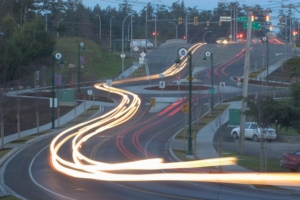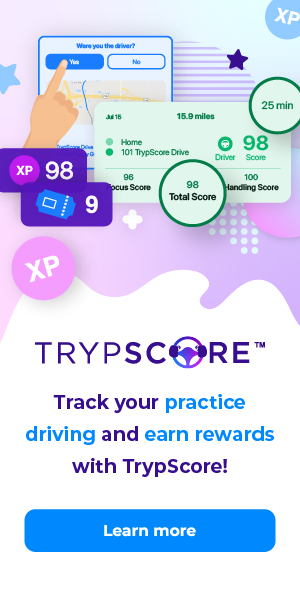Steve Wallace: Do you have to make left turn into nearest lane?

Traffic negotiates the traffic circle on Helmcken Road in this time-lapse image. Traffic circles, roundabouts and diverters have slightly different rules for drivers, Steve Wallace writes.
A letter will arrive demanding the senior attend at a doctor’s office for an in-office cognitive assessment. In fact, there might even be a letter arrive a month or so in advance announcing that the above letter will arrive. This seems redundant, but it is a policy of the authority. Before going to the appointment, one should have a driver’s abstract. This five-year record of infraction-free driving will impress any medical professional. Get it from ICBC in person or online. Bring a copy of the insurance document, with proof of a safe-driving discount, to the doctor’s appointment. Get a letter of proficiency from a driving school professional. This behaviour, barring any cognitive or physical inconsistencies, will likely negate the pending practical driving test request.
Is it legal to drive to a second or further available lane when making a left turn at an intersection?
Yes, it is a legal turn method. It is not safe, when others facing the left turner might be contemplating or doing a right turn on a red light. Right turns, on the other hand, must be done from the closest lane to the closest lane.
Is there a different right-of-way rule for big traffic circles and small ones?
There are three types of circles. The diverter is found in neighbourhoods. It is a simple substitute for an uncontrolled intersection, although it might be marked by yield signs at each entrance. First come, first served. Same-time arrivals yield to the right. One must signal to turn right and left. The traffic circle is a large intersection with only one lane option. The driver in the circle has the right-of-way over all planning to enter. One need only signal to leave. The roundabout is a multi-lane traffic circle. As with the two above-mentioned examples, those in the roundabout have the right-of-way over those planning to enter. The multi-lane nature of a roundabout necessitates a lane change from the inner lane to execute an exit from the outer lane of the roundabout.
Donald wanted to know if he should go with the flow or stick to the speed limit when on the highway. He gets tailgated when going the speed limit.
Going with the flow might get him a traffic ticket if he is speeding. There is always an undisclosed tolerance of a few kilometres per hour allowed by police, before a driver is cited. This is meant to keep traffic moving and not clog up the courts. On a multi-lane road, it is best to stick to the right lane. Those wishing to go faster will likely end up in the left lane, commonly referred to as the
passing lane. Speeding to accommodate others is not a good idea. If others are attempting to intimidate those ahead by travelling too close behind, it is acceptable to tap the brakes a few times. Some drivers activate the four-way-flashers to do the same. Tailgaters are generally not purposely threatening others, but rather often absentminded in their daily commute. Once alerted to their perceived pressure tactic, intended or otherwise, they usually back off. Persistent harassment from these drivers is handled by a real-time cellphone report to the police, complete with licence-plate identification.
Andy asked if the crosswalks at roundabouts should be placed closer or further from the intersection. It is best to place crosswalk markings well before the roundabout but not so far as to make them mid-block crosswalks.
Steve Wallace is the owner of Joan Wallace Driving School on Vancouver Island. He is a former vice-president of the Driving Schools Association of the Americas, a registered B.C. teacher and a University of Manitoba graduate.


